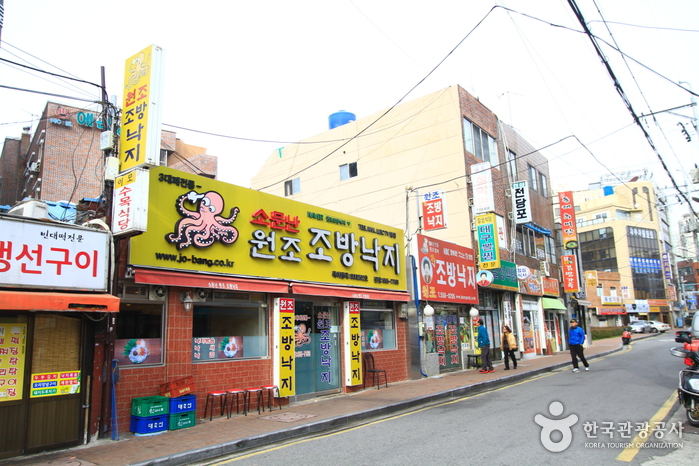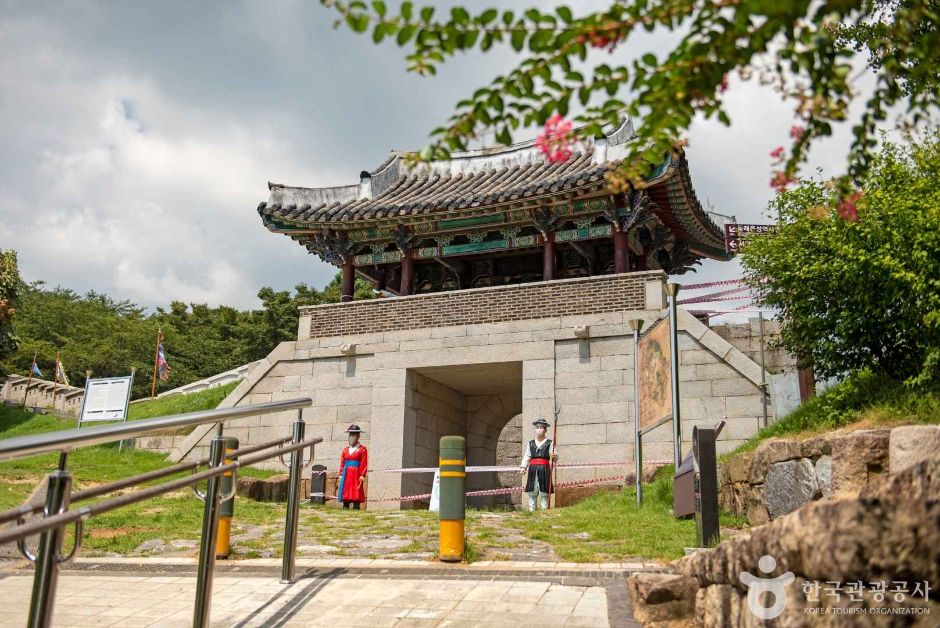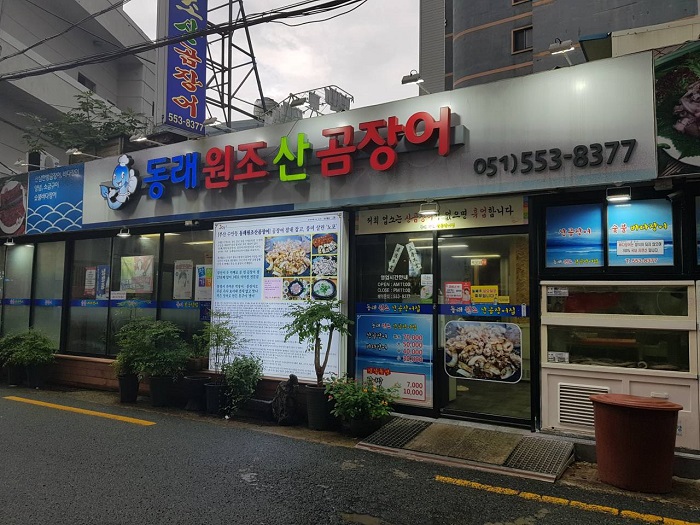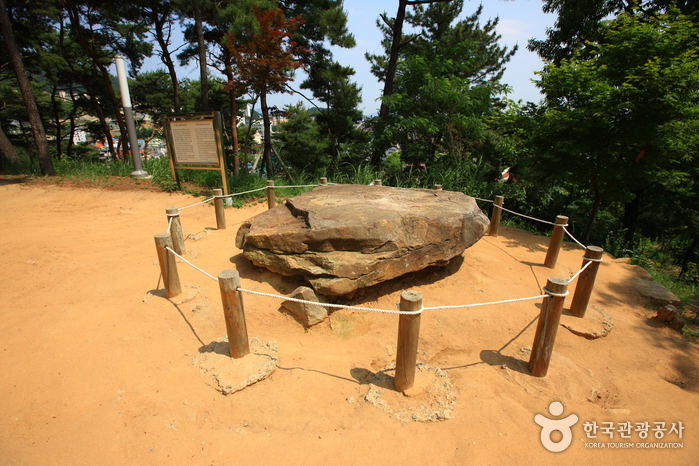Wonjo Jobang Nakji (원조조방낙지)
17.0Km 2017-12-08
37, Myeongnyun-ro 94beon-gil, Dongnae-gu, Busan
+82-51-555-7763
Many years ago there was a restaurant (‘Jobang Nakji’) in front of the textile company Joseon-Bangjik (‘Jobang’) that was widely known for its tasty Nakji Bokkeum (spicy stir-fried baby octopus). Though the restaurant is now gone, Wonjo Jobang Nakji has recreated the original taste of the famous neighborhood restaurant and was even presented with the ‘‘Korean Traditional Cultural Preservation Award’ by the Korean Traditional Culture Preservation Committee.
Gimhae Gaya History Park (김해가야테마파크)
17.0Km 2024-10-28
161, Gaya thema-gil, Gimhae-si, Gyeongsangnam-do
+82-55-340-7900
Gimhae Gaya History Park is a resting area that provides comfortable relaxation in the daily lives of the busy people and also a cultural complex where you can experience various cultures with your family, lover and friends.
Interactive theme park combining Education + Entertainment Edutainment park where you can see, hear, touch and learn about the history of Gaya and the brilliant heritage of its people through plays, experiences and exhibits.
Jeongnim Hanjeongsik (정림한정식)
17.1Km 2024-03-05
31-3 Chungnyeol-daero 237beon-gil, Dongnae-gu, Busan
+82-51-552-1211
Jeongnim Hanjeongsik is a specialty restaurant known for its Korean table d'hote, offering a delightful experience of savoring dishes with both the eyes and the palate. The seasonings are crafted from medicinal herbs, the sweetness from five-grain malt syrup, and the tanginess from vinegar made with persimmons or green plums. The pickled vegetables are matured for over three years with medicinal herb enzymes. The restaurant offers three types of Korean course meals, including pumpkin porridge, salad, kimchi, seaweed, acorn jelly, bulgogi, boiled pork slices, deep-fried mushrooms with sweet and sour sauce, deep-fried dishes, japchae, pan-fried battered lotus roots, and eggplant pancakes.
Site of Dongnaeeupseong Walled Town (동래읍성지)
17.2Km 2024-09-26
48-2 Myeongnyun-dong, Dongnae-gu, Busan
Site of Dongnaeeupseong Walled Town, built towards the end of the Goryeo dynasty and the early Joseon dynasty, was a significant fortress during the Imjin War in 1592. It served as the main battleground where civilians, officials, and soldiers united to resist the Japanese forces. Recognizing the strategic importance of the Dongnae area, a much larger fortress was constructed in 1731, replacing the original structure from one built during war. Today, only traces of the fortress remain, with the Bukmun Gate, Insaengmun Gate, Dongjangdae Command Post, Seojangdae Command Post, and Bukjangdae Command Post having been restored.
Dongnae Wonjo Sangomjangeo (동래원조산곰장어)
17.3Km 2021-03-22
42, Myeongnyun-ro, 98beon-gil, Dongnae-gu, Busan
+82-51-553-8377
This is a restaurant that sells grilled eel which is a famous health food. This restaurant's signature menu is grilled salted live hagfish. This Korean dishes restaurant is located in Dongnae-gu, Busan.
Gimhae Astronomical Observatory (김해천문대)
17.3Km 2022-12-29
254, Gaya thema-gil, Gimhae-si, Gyeongsangnam-do
+82-55-337-3785
Gimhae Astronomical Observatory opened on February 1, 2002 as part of the Millennium Commemorative Project that started in December 1998. It was built to satisfy the general public’s curiosity about the universe and celestial bodies, inspire young people, and give everyone a unique, memorable experience. The observatory is shaped like an egg, in memory of the legend of King Kim Suro, the founder of the Garak Kingdom, according to which the king was born from an egg.
It is said that the queen of King Suro, Heo Hwang-ok, was a princess from the Indian country of Ayuta. Since sophisticated navigation equipment had yet to be invented, it can be assumed that she found her way to the Garak Kingdom by following the stars. It is also said that a prince of the Garak Kingdom built an observatory on the highest point of a mud fortress in Jinrye in order to make astronomical observations. The place is still referred to as Bibidan, which means a place to watch the stars.
These historical facts indicate the stars were very important to the Gaya, an ancient kingdom established mainly in the Gimhae area. The peak of Bunseongsan Mountain, where the observatory is located, offers sweeping views of the entire area of Gimhae. The night sky of Gimhae offers a breathtaking sight.
Gimhae Gujibong Peak (김해 구지봉)
17.4Km 2021-07-13
Gusan-dong, Gimhae-si, Gyeongsangnam-do
+82-055-331-0086
Gujibong Peak in Gusan-dong, Gimhae in Gyeongsangnam-do is believed to be the birthplace of King Suro, the founder of the Gaya kingdom. The peak was originally named Gusubong (“gu” meaning “turtle,” “su” meaning “head”) after its resemblance to the head of a turtle. The flat part of the peak (the turtle’s “head”) is home to the Tomb of King Suro. On the summit is a southern-style dolmen dating back to the 4th century BC that consists of 5 or 6 support stones and a large cover stone measuring 2.5m in diameter. The cover stone bears the inscription “Gujibongseok,” said to be written by Han Ho.
Gujibong Peak is considered a sacred place by the local people because, according to legend, it is the place where the creation of the Gaya Kingdom took place. During the Japanese colonial rule, the “neck” of the turtle was destroyed by the construction of a mountain road. Years later, a pedestrian road was built to rejoin the neck and restore the feng shui of the mountain.
Miryang Dwaeji Gukbap (밀양돼지국밥)
17.5Km 2024-02-23
91 Inje-ro, Gimhae-si, Gyeongsangnam-do
Miryang Dwaeji Gukbap is a renowned dwaeji gukbap (pork and rice soup) establishment located in Eobang-dong, Gimhae-si. Recognized among the top 100 recommended restaurants for Gimhae tourism by the city, this eatery has become so popular that visitors often queue to taste its offerings. Standard accompaniments include buchu muchim (chive salad), chili peppers, garlic, and kimchi. In addition to dwaeji gukbap, visitors can enjoy suyuk (boiled pork slices). Nearby attractions include Gimhae Gaya History Park, Gaya Land, and Bunseongsan Mountain.
LG Best Shop - Busan Nat’l Univ. of Education Branch [Tax Refund Shop] (엘지베스트샵 부산교대점)
17.5Km 2024-04-19
1242, Jungang-daero, Yeonje-gu, Busan
-





![LG Best Shop - Busan Nat’l Univ. of Education Branch [Tax Refund Shop] (엘지베스트샵 부산교대점)](http://tong.visitkorea.or.kr/cms/resource/63/2885463_image2_1.jpg)
 English
English
 한국어
한국어 日本語
日本語 中文(简体)
中文(简体) Deutsch
Deutsch Français
Français Español
Español Русский
Русский